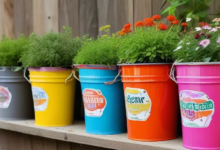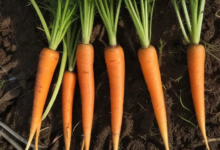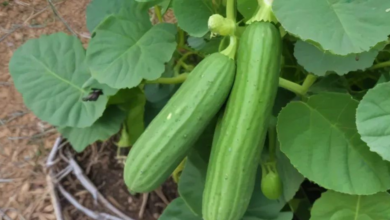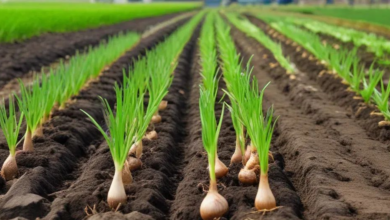Spring Planting Guide
Unlock the secrets of spring planting with our comprehensive guide to cultivating a bountiful vegetable garden.
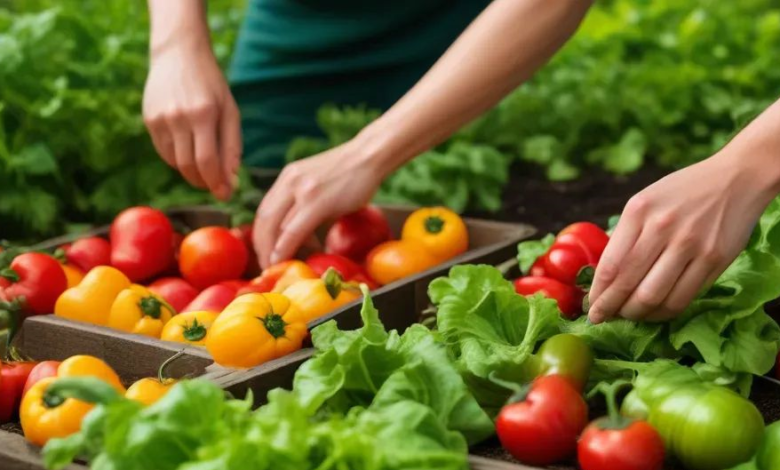
With spring, gardeners worldwide eagerly await a new growing season. Spring provides new life, vibrant colors, fresh scents, and freshly cultivated soil. This is the start of a thrilling tour to a magnificent home vegetable garden for gardeners.
This thorough spring planting guide covers vegetable garden essentials. From selecting vegetables to preparing the soil and organizing your garden, spring gardening is beautiful and rich.
A successful garden starts with vegetable selection. The lettuce leaves and juicy tomatoes taste great. Choose crops based on climate, space, and personal tastes to design a garden that suits you.
After selection, soil—a garden’s lifeblood—is prioritized. Fertile soil provides nourishment to plants. Plant growth requires soil loosening, organic matter, and pH adjustment.
After soil preparation, plan your garden. Strategic vegetable arrangement by sunlight and space increases yields and reduces resource competition. Companion planting, which unites complementary species, improves garden health and yield.
Celebrate spring’s renewal and growth via gardening. Your spring vegetable garden may yield fresh, nutritious vegetables to nourish body and spirit with dedication, care, and inventiveness. Join us as we enjoy spring vegetable planting.
1. Cool-Season Vegetables
Cool-season veggies thrive in April as the garden revives. These tough vegetables thrive in spring and fall, so start your season with them.
Cool-season favorites include peas, radishes, carrots, broccoli, and spinach. Broccoli and spinach are also popular. These crops can resist low temperatures and light frosts, so we may be able to grow and harvest them early in October.
Organic, well-draining, and sunny soil is best for winter vegetables. Healthy plants require regular mulching and watering to maintain soil moisture and temperature.
Seasonal ripe veggies can improve salads, sautés, and other foods. Cool-season vegetables are sturdy, adaptable, and high in nutrients, making them excellent for spring vegetable gardens.
| Vegetable | Details |
|---|---|
| Lettuce | Sow seeds directly or start indoors for transplanting; various varieties (butterhead, romaine); keep hydrated and shaded in hot areas. |
| Spinach | Plant seeds directly in well-draining soil; needs frequent watering to avoid bitterness. |
| Radishes | Fast-growing; plant seeds directly for quick harvest; crisp and peppery, ready in a few weeks. |
| Peas | Best planted in spring; plant seeds directly with stakes for support; yields abundant crops. |

Lettuce
You can sow the seeds straight into the plant or start them indoors for transplanting. There are many lettuce varieties to choose from, from butterhead to romaine. Growing lettuce is also possible. Keep hydrated and provide direct shade in hotter areas to avoid getting shot. Both matter.
Spinach
Following soil preparation, spinach seeds should be planted immediately in the garden.
This nutrient-dense leafy green thrives on well-draining soil and needs frequent watering to avoid bitterness. Both contribute to good performance.
Radishes
Because of their fast growth, planting these vegetables in spring will yield them quickly.
Radishes are crisp and peppery, and they can be eaten a few weeks after planting the seeds directly into the ground. Radishes are tasty and healthy.
Peas
Spring is the greatest season to shell peas and beans, depending on your preferences. This is also the perfect time to shell beans.
Set stakes and plant seeds directly into the earth for plentiful crops.

2. Warm-Season Vegetables
Planting warm-season vegetables is a great way to commemorate the change of seasons. These lush greens thrive in late spring and early summer rainfall. These plants must be planted once the earth has warmed and frost has passed. Since these plants thrive in heat and sunlight, To start your spring drama, I’ll include some of the most common warm-season vegetables.
| Vegetable | Details |
|---|---|
| Tomatoes | Plant seeds or transplants 6-8 weeks before the last frost-free day; require warm soil and support for indeterminate varieties. |
| Peppers | Sow seeds or plant transplants weeks before the last frost; need warm soil and consistent humidity. |
| Cucumbers | Plant seeds directly into warm (60°F/15°C) soil; support vining varieties and keep soil moist. |
| Zucchini & Squash | Plant seeds after the soil warms and frost is gone; allow space for sprawling vines and harvest young fruits. |
Tomatoes
Choose commercial transplants or plant tomato seeds outside six to eight weeks before the last frost-free day. Both choices are accessible. First, put tomato seeds outside in the fresh air. To ensure a high output, indeterminate tomato manufacturers should cultivate their plants in treated soil and provide help.
Peppers
Pepper seeds can be sown outside weeks before the forecast frost, like tomatoes. This applies to tomatoes. Heat the dirt and remove any frost to properly disperse the pepper seedlings around the theater. Long-term regeneration requires continuous humidity.
Cucumbers
Plant cucumber seeds directly into the theater if the soil is 60 degrees Fahrenheit (15 degrees Celsius). Supporting vining variety and keeping soil moist promote rapid growth and a large fruit production. Both methods maintain soil moisture.
Zucchini and Squash
The little rainfall in late spring and early summer helps these prolific stores develop. Zucchini and squash seeds should be planted quickly after the soil warms and frost is gone. Give the sprawling vines plenty of freedom to grow and harvest the young, tasty fruits.
3. Herbs and Perennials
Spring planting of seasonal vegetables is possible, but you should also grow perennials like veggies and sauces. These should provide crops for the foreseeable future. Thus, before planting in your theater in spring, consider the following.
| Plant | Details |
|---|---|
| Basil | Grow from seeds or transplants; requires well-drained soil and plenty of sunlight; harvest regularly to promote bushy growth and prevent flowering. |
| Rosemary, Thyme, Sage | Grow in pots or directly in the garden; needs a sunny area with well-draining soil; prune regularly to maintain shape and encourage growth. |
| Asparagus | Plant crowns in well-prepared soil at the start of spring; requires patience as it takes time to mature; provides long-term harvests. |
Basil
Homegrown basil seeds or nursery transplants. Both are possible. Both options are possible. For optimal results, grow basil in well-drained soil with lots of sunlight. Coordinated splint harvesting inhibits flowering and promotes bushy growth.
Rosemary, Thyme, and Sage
These evergreen sauces can be grown in pots or directly in the theater. For optimal results, choose a sunny area with well-draining soil.To maintain your shape and encourage development, you must prune your hair regularly. You must trim your hair.
Asparagus
At the start of spring, asparagus crowns should be planted in well-prepared soil. Asparagus, a delicacy that cannot be eradicated, will continue to provide delicious pikestaffs for a long time if conservation procedures are followed. Remember to be patient because newly planted crowns may take a long time to reach their full potential. Remember that patience is key.
How To Plant and Prepare
Make sure your theater beds are ready to plant before spring planting. Make this your first step. Each agricultural crop needs different amounts of sunlight, soil quality, and plant spacing. These steps must be done in order before planting.
Soil Preparation
To help your plant grow, measure the soil’s pH and nutrients and make any necessary changes. Organic matter improves soil structure and fertility. Organic materials include compost, aged manure, and decaying leaves.

Garden Layout
Your garden should be designed to maximize space and sunshine. Rotating crops and adding supplemental planting to minimize pests and promote growth can prevent soil erosion and disease growth. Both strategies effectively prevent disease and pest proliferation..
Timing
The planting calendar or a local Extension service agent can help you determine the best planting time for your location. Early spring is the time to sow cool-season veggies in good soil. However, warm-season crops should be planted after the last frost.
How To Nurture Your Garden
After establishing your spring vegetable garden, it needs care to grow healthily and yield lots of vegetables. This guarantees garden success. The following should be considered before, during, and after growth season.
Watering
It’s crucial to keep the soil moist without becoming saturated, especially in hot, dry weather. Watering the plant properly and sparingly promotes deep roots and drought resilience.

Mulching
Covering your plants with organic mulch will maintain soil temperature, inhibit weed growth, and save moisture. This includes straw, grass clippings, and crushed leaves. Another example: straw. Mulching reduces soil erosion and compaction. Mulching provides various benefits.
Feeding
To give your plants all the nutrients they need for healthy growth, fertilize them regularly with a balanced fertilizer. This ensures your plants get all the nutrients they need. Compost, fish emulsion, and seaweed extract are environmentally friendly organic fertilizers for plants. These are organic fertilizers.
Pest and Disease Management
It’s crucial to look for signs of diseases or pests in your garden and be willing to fix any issues. Cultural interventions including crop rotation, companion planting, and sanitation can reduce disease and insect pressure.

Harvesting
Vegetables should be picked when fully mature for maximum flavor and freshness. Harvesting mature cucumbers, tomatoes, and peppers at their peak flavor and texture is essential. Because these fruits have completely developed flavor and texture. Herbs and leafy greens must be harvested often to promote growth. Because these materials are valuable.
Conclusion
Soon, your spring vegetable garden will be full with greenery, blossoms, and harvests. This will need little effort, thought, and attention from you. Despite your minimal cultivation, this will be true. Spring is a time of promise and bounty in the garden, whether you are sowing seeds of cool-season veggies, warm-season favorites, or perennial herbs you will love using in the kitchen for years to come. Whatever you plant, it’s cool-season vegetables. This is important whether you’re growing herbs or vegetables. By following this guide’s instructions and suggestions, you can grow a vegetable garden and succeed. High-quality, fresh vegetables will be chosen for your family throughout the year. This will happen all year. If you’re new to gardening, get your hands filthy. Start with this.
